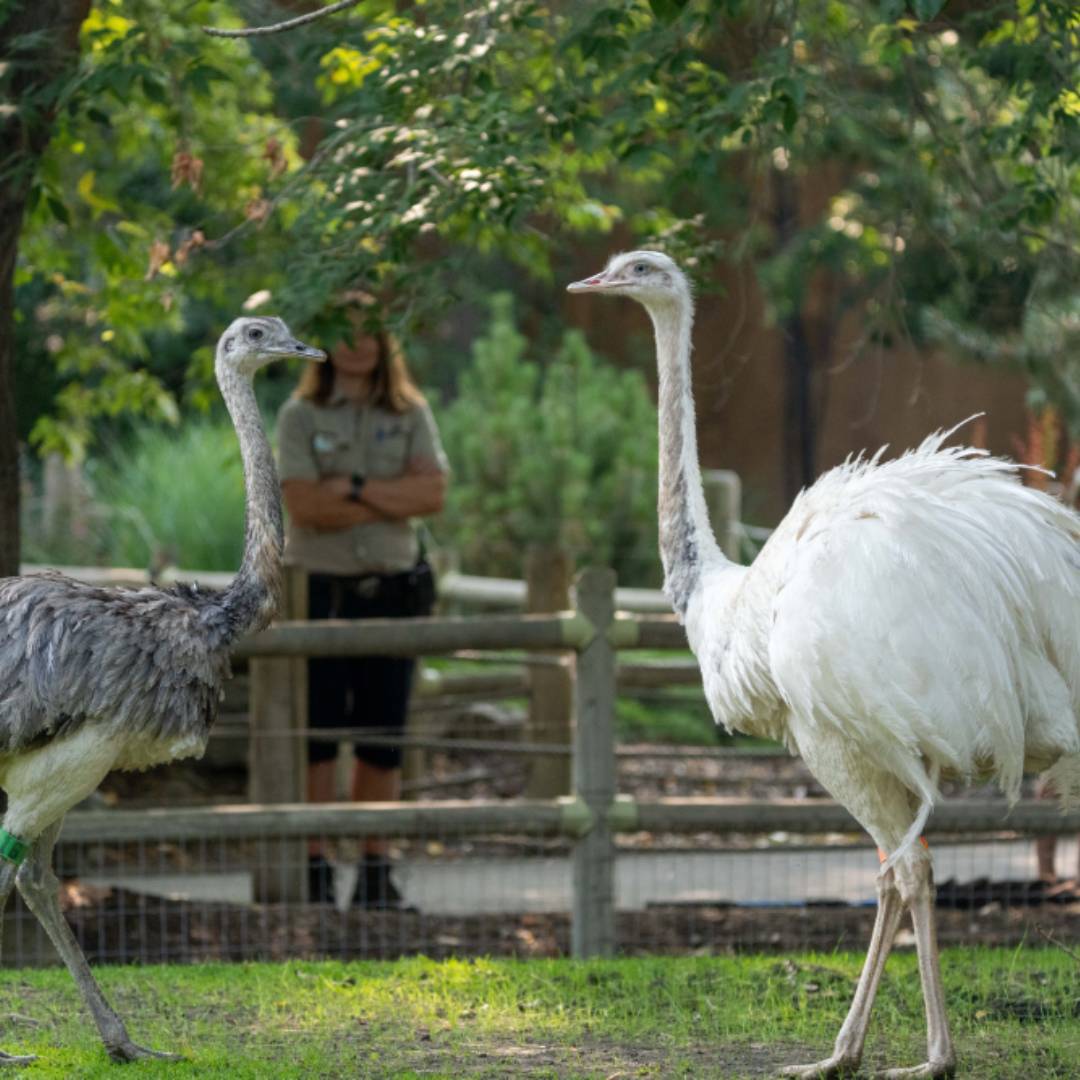Summary:
1. Introduction to the arrival of two female greater rheas, Chip and Dip, at the zoo.
2. Explanation of their settling into the South America zone and their future habitat.
3. Farewell to the male greater rhea, Tatu, as he departs for new adventures.
4. Invitation to visitors to spot the new arrivals.
5. Importance of conservation efforts in protecting the greater rheas.
Exciting news! The zoo is excited as we proudly announce the arrival of two female greater rheas, Chip and Dip, to their new home in the South America zone. These magnificent birds, at two and six years old, respectively, have already captured the hearts of our dedicated animal care team, and we can’t wait to share their journey with you.
Chip and Dip have been settling into their new surroundings, getting comfortable in their enclosure, and soon, they will be venturing into the courtyard for all visitors to marvel at their beauty. However, they must be gradually introduced to their new habitat, so our Animal Care, Health, and welfare team will be rotating access to the yard for the rheas and alpacas. This gradual process ensures that the rheas are at ease and ready to coexist in a mixed species habitat, providing a more enriching and natural environment.
In addition to Chip and Dip’s arrival, we must bid a fond farewell to our male greater rhea, Tatu. He has left us for new adventures, and while we will miss him dearly, we are thrilled to see him embark on new experiences. Our zoo is dynamic, and these comings and goings of animals create a fluid and ever-changing environment that constantly provides new opportunities for growth and discovery.
When you visit the zoo, we invite you to keep your eyes peeled and see if you can spot our new arrivals. Chip, with her striking white coloring, is a vision of elegance. On the other hand, Dip boasts a beautiful gray coat that perfectly complements her regal presence. With their long legs, slender bodies, and feathery plumes, these fascinating birds are truly a sight to behold.
As you marvel at Chip and Dip’s grace, it is also important to appreciate the significance of their presence in our zoo and the conservation efforts surrounding them. Greater rheas are native to South America, and their populations have faced numerous challenges due to habitat loss and illegal hunting. By housing these magnificent birds in our zoo, we contribute to their conservation by raising awareness about their plight and supporting captive breeding programs that aim to reintroduce them into the wild.
In conclusion, Chip and Dip’s arrival and Tatu’s departure mark an exciting chapter in the life of our zoo. We eagerly anticipate the day when Chip and Dip venture out into the mixed species habitat, allowing visitors to witness the harmonious coexistence of these unique creatures. We hope their presence brings joy to those who witness their beauty and encourages a deeper understanding of the importance of conservation efforts in preserving the incredible diversity of our natural world. So, visit us and see if you can spot our new arrivals – they are waiting to captivate you with their charm and grace.
*****
Source Description
Exciting news! We welcome two female greater rheas, two-year-old ‘Chip’ (white coloring) and six-year-old ‘Dip’ (gray coloring), from Parc Safari to their new home. 💕
Chip and Dip have settled into their new home in the South America zone and will soon be venturing into the courtyard. Our Animal Care, Health, and welfare team will rotate access to the yard for the rheas and alpacas until they are comfortable in their new surroundings and are ready to share a mixed-species habitat.
In other rhea news, we also bid a fond farewell to our male greater rhea, ‘Tatu,’ as he moved on to new adventures!
See if you can spot our new arrivals on your next visit.


